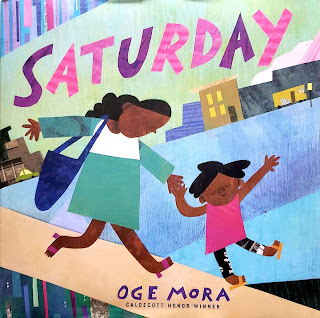Anti-Bias Book Review: Ohana Means Family

For my anti-bias children’s book review, I chose the book Ohana Means Family, written by Ilima Loomis and illustrated by Kenard Pak. This book is about native Hawaiian tradition, the connection of families between culture, the native land, and Hawaiian history. This book provides an anti-bias perspective from its inclusion of minority groups and people of color and underrepresented communities in Hawaii. Oftentimes, life in Hawaii is misunderstood by the mainland United States, in addition to the gentrification of native Hawaiian culture that wrongly identifies Hawaiian culture and lifestyle. This book provides an accurate depiction of Hawaiian culture, the people, and the community, and supports children of native Hawaiian or Polynesian backgrounds that are rarely correctly presented in any form of media. As shown from the cover, the illustrations and characters show people of different skin tones, hair textures, ages, ability, and a community of people who are all different, and a sense of cohesion and community. The illustrations are beautiful and use many colors and vivid imagery of the land in Hawaii. This text also includes words in Hawaiian, and a glossary page to translate the Hawaiian words into English. The relationships between the people presented show an `Ohana working together to create their luau, but as the title suggests, `Ohana means family but is not limited to direct or immediate family, but can be used to describe a community of those you love and care for. The relationships between the people and the native land is also an important topic in this book, as each page alternates between showing appreciation for the individuals working together and then appreciation for the land, water, wind, and materials on the island that locals in Hawaii learn to appreciate from a young age. The overarching message is to show appreciation for Hawaiian culture, your elders, and the effort and community work, not solely done by the female characters, that goes into making one dish, poi out of the taro root. Through the pages showing all of the hands that go into making the poi, the text shows Hawaiian food that is not commonly eaten by many that are not Hawaiian which raises awareness for a local staple. In addition, the line “ the land that’s never been sold” shows the cultural perspective of Native Hawaiian people where the sacred land was taken over by explorers and brings awareness to the culture that is gradually becoming lost, gentrified, and misrepresented and may connect children who are Hawaiian back into their culture and identity. With the empty native land as depicted in the book, it shows families who live in rural areas and show different cultural norms and lifestyles than the traditional “American” stereotype (Derman-Sparks).
As emphasized by Iruka, Curenton, Durden, and Escayg in the text Don't Look Away, it is so important for children and teachers to be aware of their intersectionality and identities. With activities like “I Am From,” it is important for children to represent their culture and ethnicity, but to also find that same kind of representation in books and media. As Hawaiian culture is rarely represented and oftentimes white-washed and/ or misrepresented by the image that tourists in Hawaii see, it is important for children to read books like `Ohana Means Family, to get an accurate picture of Hawaiian culture and the tight-knit community structure. As children are capable of understanding anti-bias principles, it is important for children to read anti-bias books, like `Ohana Means Family, to address any negative perceptions, and to teach children about different cultures. As explained in Don’t Look Away, children can undo pre-existing assumptions of biases through meaningful experiences like reading anti-bias books or engaging in conversations that teach them about different cultures and differences in general (67). As white privilege is prominent in the US, these institutional biases must be combated from a young age to mitigate racism and microaggressions (Iruka et al., 27). This book can be used to expand children’s perspectives about the inclusion of different cultures, ethnicities, lifestyles, and languages of other children. As Hawaii is part of the US, but those living there have differing lifestyles, backgrounds, and cultures, it is important for children to understand these different cultures and show the representation of different ethnicities and histories.
References:
Derman-Sparks, Louise. “Guide for Selecting Anti-Bias Children's Books.” Teaching
for Change, 17 Apr. 2019, https://www.teachingforchange.org/selecting-anti-bias-books.
Iruka, I., Curenton, S. M., Durden, T. R., & Escayg, K. A. (2020). Don’t look away:
Embracing anti-bias classrooms. Gryphon House.
Loomis, Ilima, and Kenard Pak. Ohana Means Family. Neal Porter Books, 2022.


Comments
Post a Comment